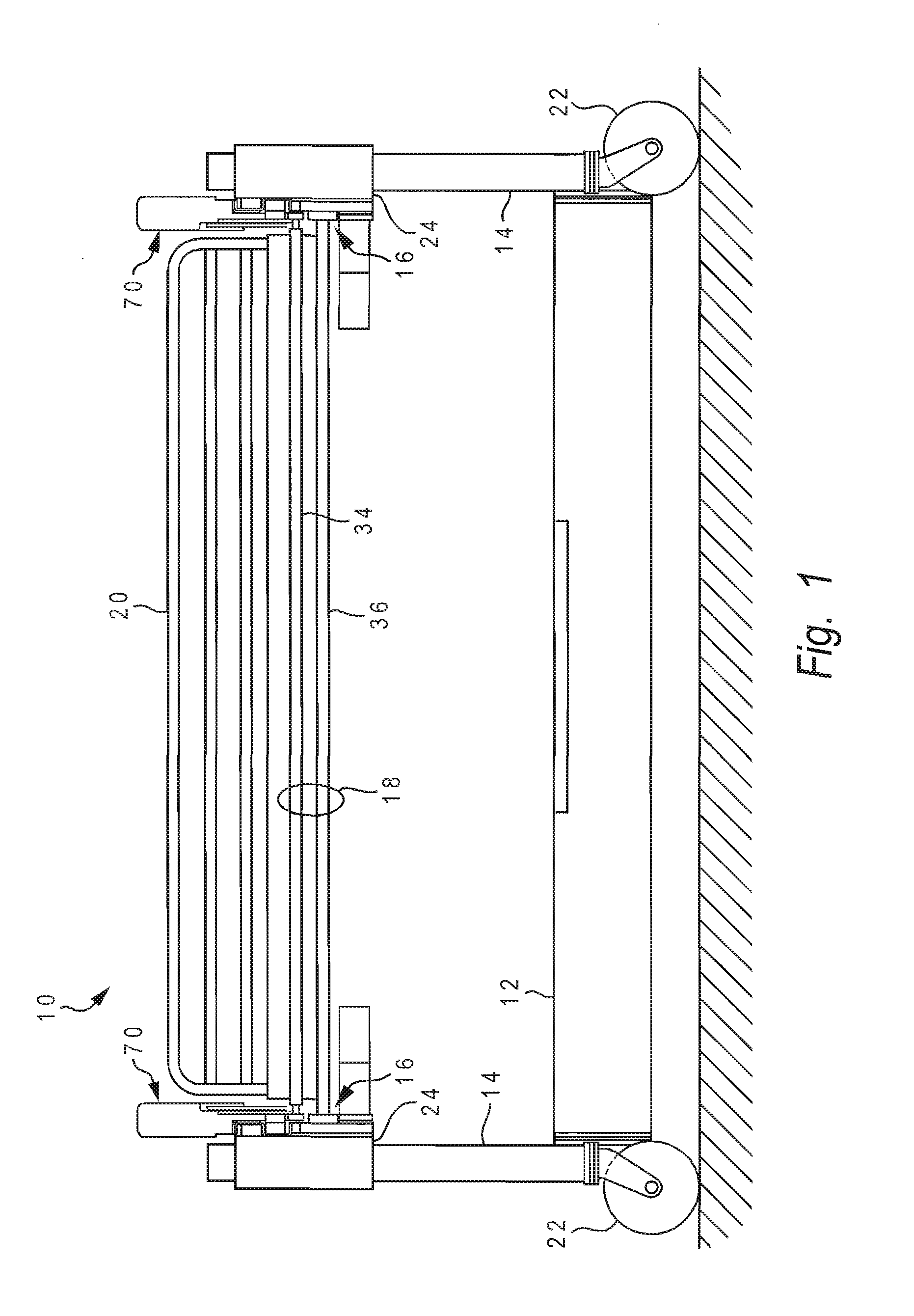Patient lift and transfer device
a technology for lifting and transferring patients, applied in the field of moving objects, can solve the problems of exacerbated problems, further discomfort, and -rotating belt designs
- Summary
- Abstract
- Description
- Claims
- Application Information
AI Technical Summary
Benefits of technology
Problems solved by technology
Method used
Image
Examples
Embodiment Construction
)
[0035] With reference now to the figures, and in particular with reference to FIGS. 1-3, there is depicted one embodiment 10 of a patient lift and transfer device constructed in accordance with the present invention. Patient lift and transfer device 10 is generally comprised of a frame or base 12, two vertical support columns 14 mounted on base 12, a horizontal slide assembly 16 attached to support columns 14, a table assembly 18 attached to slide assembly 16, and side rails 20 attached to support columns 14.
[0036] Base 12 is generally rectangular in shape when viewed from above, and extends the full length of device 10. Base 12 is constructed of any durable material, preferably a fairly dense metal or metal alloy such as stainless steel to help anchor the device. Four wheels or pivoting casters 22 are attached to base 12, one at each corner, and provide a clearance space of about three inches between the bottom of base 12 and the floor. Casters 22 are preferably large-diameter, l...
PUM
 Login to View More
Login to View More Abstract
Description
Claims
Application Information
 Login to View More
Login to View More - R&D
- Intellectual Property
- Life Sciences
- Materials
- Tech Scout
- Unparalleled Data Quality
- Higher Quality Content
- 60% Fewer Hallucinations
Browse by: Latest US Patents, China's latest patents, Technical Efficacy Thesaurus, Application Domain, Technology Topic, Popular Technical Reports.
© 2025 PatSnap. All rights reserved.Legal|Privacy policy|Modern Slavery Act Transparency Statement|Sitemap|About US| Contact US: help@patsnap.com



